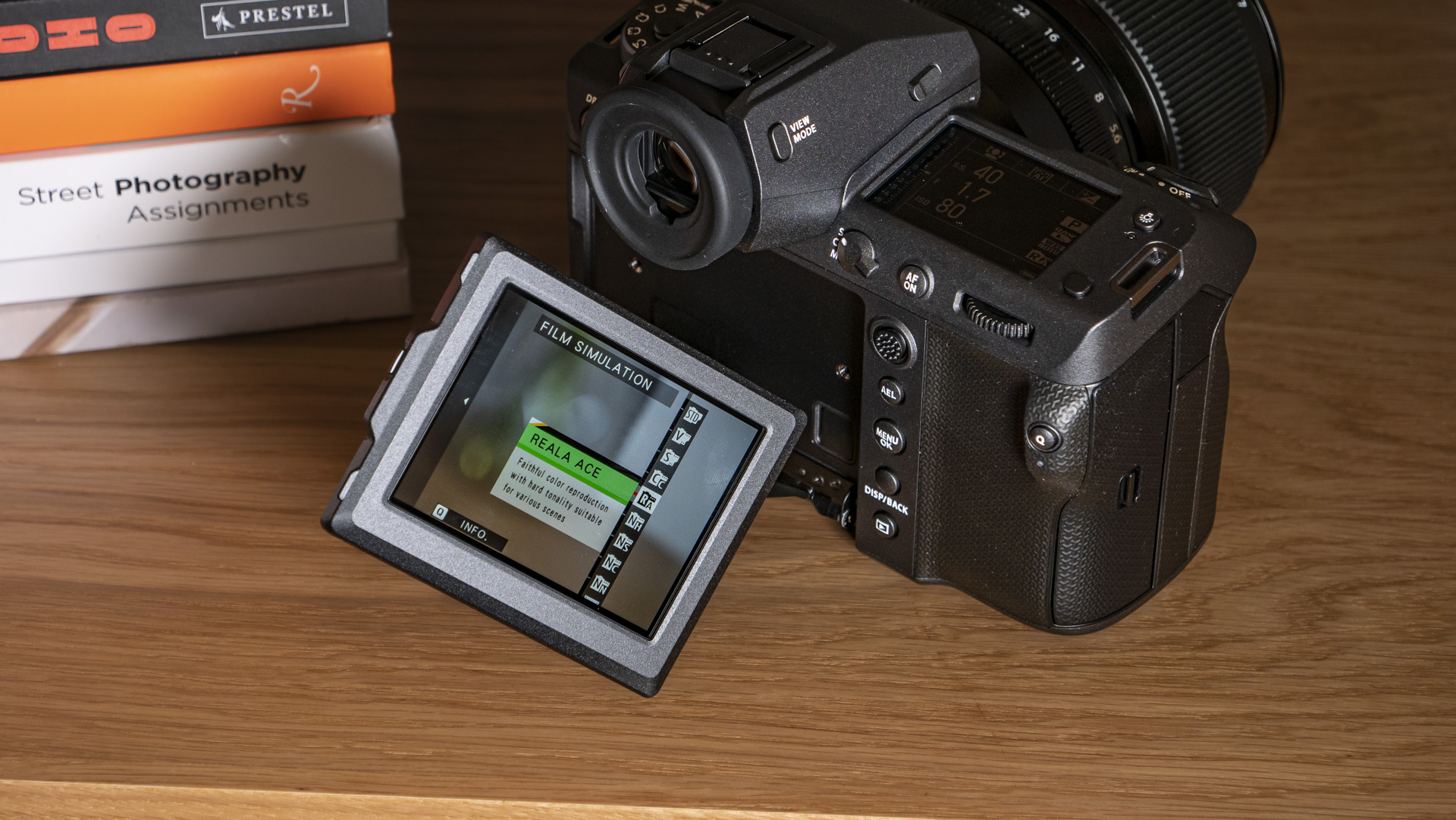Fujifilm GFX100 II finally makes medium-format cameras feel as fast as full-frame
Who said medium format was slow?

The star of Stockholm at this week's Fujifilm X Summit is undoubtedly the Fujifilm GFX100 II, which has been unveiled as the company’s latest flagship medium-format mirrorless powerhouse.
It aims to usurp the Hasselblad X2D 100C as the best medium-format camera available, and in a cheeky move on Fujifilm’s part, it was shown off in the Swedish camera maker’s backyard.
The Fujifilm GFX100 II will be available from September 26, with a list price of $7,499 / £6,999 / AU$12,599, and the grip costs $499 / £479. That’s somewhere between the launch prices of the GFX100 and GFX100S, and around what we'd expect given the camera’s features.
Alongside the GFX100 II, Fujifilm announced three new medium-format GF lenses: the GF 55mm F1.7 R WR priced at $2,299 / £2,249 / AU$3,899, and two tilt-shift lenses, the GF 30mm F5.6 TS ($3,499 / £3,499 / AU$6,799) and the GF 110mm F5.6 TS ($3,999 / £3,999 / AU$5,899).
The Fujifilm GFX100 II keeps all that is great about medium format; class-leading 102MP still images, yet adds serious power under the hood that matches the kind of speedy performance we expect from smaller format cameras like Fujifilm’s own X-T5 or X-H2.
The camera boasts excellent phase-detect autofocus, including human and animal tracking, 8-stop in-body image stabilization, and 8fps continuous shooting for more than 1,000 JPEGs. It’s the kind of performance not seen before in a medium-format camera, and it's super-impressive, especially considering the large file sizes the GFX100 II produces.
The GFX100 II succeeds the GFX100, with next-level performance in virtually all aspects, and takes the same form factor as the smaller GFX100S, but with the option to bulk it out and improve battery life using a new vertical grip, while an optional EVF accessory can add a tilt function to the removable 9.44m-dot EVF, which could be the best viewfinder to date. Is this the future of medium-format?

Next-gen speed
Medium format can deliver next-level image quality, but the traditional trade-off is much slower performance compared to the best mirrorless cameras with smaller full-frame or cropped sensors. We’d normally be looking at limited continuous shooting speeds and sluggish autofocus, but the GFX100 II looks to change all that, evolving the series to make it suitable for a wider range of photography and video scenarios.
The new 102MP sensor is paired with Fujifilm’s X Processor 5 for speedier performance, including the same phase-detection autofocus performance with human and animal subject-tracking as Fujifilm’s own X-T5 and X-H2, including animal eye AF, and is equipped with up to eight stops of in-body stabilization, which is two stops better than the GFX100.
Sign up for breaking news, reviews, opinion, top tech deals, and more.

It’s no action camera, but 8fps continuous shooting for over 1,000 JPEGs, when recording to a CFExpress card, is nothing to sniff at. Considering the huge files sizes, it’s an impressive performance, in line with enthusiast cameras from smaller-sensor formats – and we haven’t even got onto video yet.
There are too many video features to sensibly list here, but highlights include 8K / 30p (with 1.51x crop), 4K / 60p and Full HD 120p, with F-Log 2 color profile giving 13+ stops of dynamic range at ISO 800, and up to 14 stops using dynamic range priority, plus useful tools including waveform and vector scope.
We also get the latest addition to the Fujifilm film simulation catalog: Reala Ace. It’s a soft, natural, yet rich look, which you can see samples of in our Fujifilm GFX100 II hands-on review.

Analysis: a powerhouse… for who?
Boasting the fastest performance we’ve seen in medium format, the GFX100 II is a powerhouse mirrorless camera in every way. It’s also sensibly priced given what you get for your money – even though it's prohibitively expensive for most people – while its design offers the best of both worlds: the smaller body of the GFX100S, with the option to further bulk it out for easier vertical shooting and better battery life, which is already upped by around 20% despite using the same WP235 battery used in other GFX cameras.
This could be the most capable camera we’ve seen in this format, and genuinely usable outside of controlled environments like the studio. I do wonder, though, who is buying GFX cameras? It’s a format that's traditionally used by pro photographers shooting on film, in the studio; yet here we have a medium-format camera stepping into the future, and looking like it will hold its own among the best mirrorless cameras. Those that can afford to buy the Fujifilm GFX100 II should be treated to an amazing shooting experience and excellent images; heck, they could even try out video while they're at it.
You might also like
- I tested Hasselblad’s 100MP camera and it made my full-frame Nikon look ordinary
- These are the best mirrorless camera you can buy
- The Fujifilm GFX100 II launch could be days away – here are the 7 most exciting rumors

Tim is the Cameras editor at TechRadar. He has enjoyed more than 15 years in the photo video industry with most of those in the world of tech journalism. During his time as Deputy Technical Editor with Amateur Photographer, as a freelancer and consequently editor at Tech Radar, Tim has developed a deeply technical knowledge and practical experience with cameras, educating others through news, reviews and features. He’s also worked in video production for Studio 44 with clients including Canon, and volunteers his spare time to consult a non-profit, diverse stories team based in Nairobi. Tim is curious, a keen creative, avid footballer and runner, and moderate flat white drinker who has lived in Kenya and believes we have much to enjoy and learn from each other.